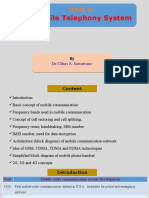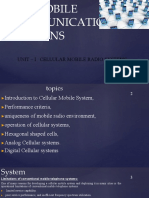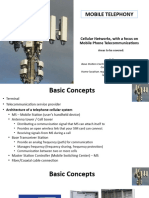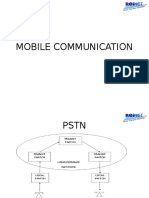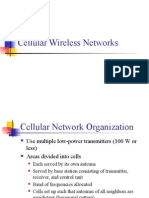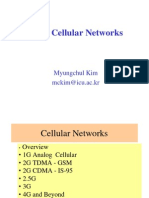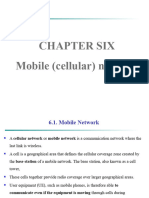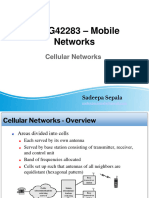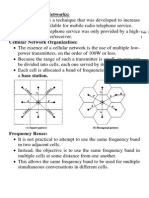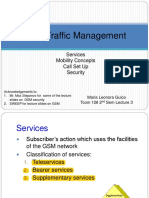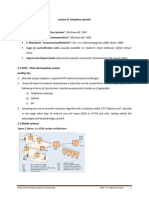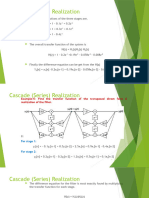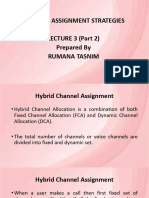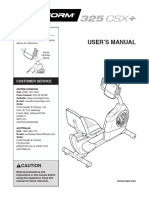0% found this document useful (0 votes)
18 views15 pagesWeek 4 Part 2
Cell splitting is the process of subdividing a congested cell into smaller cells to increase capacity. This involves installing additional base stations between existing cells to define new, smaller cells. By increasing the number of base stations and cells, more channels can be reused in the same area, reducing traffic load on individual base stations and improving capacity. An example shows an existing cell saturated with traffic being split by adding two new base stations to create three smaller cells within the original cell's coverage area.
Uploaded by
jivap41040Copyright
© © All Rights Reserved
We take content rights seriously. If you suspect this is your content, claim it here.
Available Formats
Download as PDF, TXT or read online on Scribd
0% found this document useful (0 votes)
18 views15 pagesWeek 4 Part 2
Cell splitting is the process of subdividing a congested cell into smaller cells to increase capacity. This involves installing additional base stations between existing cells to define new, smaller cells. By increasing the number of base stations and cells, more channels can be reused in the same area, reducing traffic load on individual base stations and improving capacity. An example shows an existing cell saturated with traffic being split by adding two new base stations to create three smaller cells within the original cell's coverage area.
Uploaded by
jivap41040Copyright
© © All Rights Reserved
We take content rights seriously. If you suspect this is your content, claim it here.
Available Formats
Download as PDF, TXT or read online on Scribd
/ 15




